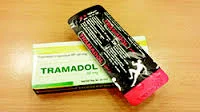For many, washing our vulva with our favourite shower gel or soap is a
regular part of our daily routine. We grew up knowing our mothers,
sisters, and friends did this and many of us were told that washing
themselves with soap is necessary to stay clean and avoid unpleasant
odor. How many of us ever stopped to think whether this is what we
should be doing or was it just what we were told to do. There are a
plethora of products aimed specifically for 'intimate freshness' for
women, playing on an idea that we will smell unless we wash with
fragranced cleaning products. What's worse is that more than half of the
women do not even know that this can be potentially harmful to them and
their bodies.
Many women will say soap is fine, even those who know the potential risks will say that a mild soap is still suitable, that they themselves use this without having any problems occurring. However, as true as this may be for those individuals, for a large number of women this can cause problems that can go on without the knowledge of the cause. Regardless of how fine cleaning with soap may feel, it still remains bad for vaginal health; an unnecessary act which is often seen as a necessity.
Women who use soap often do not know any different. It has been ingrained in our mind that to be clean one must use cleaning products but it is often a surprise to women to finally know how harmful this can be. Truthfully women's vaginas and vulvas are not as dirty as some people seem to think, certainly the smell of the vagina is not one that should be removed or covered up. It is not a foul smell and far from something that should repel men as it is a natural sexual attractant.
We as women are supposed to have a smell, we are supposed to have bacteria (both good and bad), we are supposed to have yeast and we are supposed to have fluids leaving our vagina both during menstruation and as everyday discharge. Left to it's own devices the vagina is a self-contained environment, it keeps itself healthy and is self-cleaning so needs little help from us unless an infection occurs, and then it is up to your friendly gynecologist to prescribe just what we need.
That is not to say women cannot take an active role in their vaginal health. Many doctors will support the use of natural remedies to help aid in vaginal health such as the use of yogurt or tea tree oil to treat infection rather than using medical treatments for infection, the more natural things used to treat this delicate environment the better.
For the vagina more problems can occur. Soap can cause irritation and inflammation of the mucosa much in the same way as it would cause irritation of the vulva. This not only causes discomfort but can also leave women more susceptible to STD's. The vagina has a very delicate bacterial and PH balance and with the effect of soaps having differing PH levels, it can affect the normal vaginal PH level and may lead to imbalances in the bacteria levels.
Bacteria are naturally occurring in the vagina however when the anaerobic bacteria, genital mycoplasmas and gardnerella vaginalis overgrow or lactobacilli are reduced, then this can cause bacterial vaginosis. Bacterial vaginosis is a bacterial infection that is common in many women, most commonly caused by this PH imbalance. The symptoms are not always present however when they are, women will experience excessive discharge and a foul 'fish' type smell. This infection is not necessarily serious, unless the women has a IUD or the infection progresses further into the vagina, however this infection can be very stubborn to get rid of and modern medicine cannot always guarantee successful treatment. The PH imbalance can also affect the naturally occurring yeast in the vagina, again leading to infection and further irritation through yeast infections.
It may be tempting to use soaps, douches or feminine sprays if an infection is already present, however these will only complicate existing infections. Douching can have these negative effects, as it pushes harmful bacteria farther up into the reproductive system as well as using soap which removes all vaginal bacteria.
There are also unseen risks, that of synthetic chemicals, many soaps and cleaning product contain synthetic chemicals as a way to improve the shelf life of the product. The majority of modern cosmetics are constructed from complex mixtures of synthetic chemicals. Alone these chemicals pose little risk, however, combined with other products, they can create a cause for concern, particularly if exposed to the delicate mucosa of the vagina and vulva.
Many commonly used chemicals cannot only cause allergic reactions but are suspected hormone disrupters and so are potentially harmful. The skin on our bodies absorbs chemicals in cosmetics but because it has keratinized squamous epithelium, which is the protective outer layer, it is largely protected. However, as the vaginal/vulva mucosa does not have this protective layer, its absorbency is higher.
Many women will say soap is fine, even those who know the potential risks will say that a mild soap is still suitable, that they themselves use this without having any problems occurring. However, as true as this may be for those individuals, for a large number of women this can cause problems that can go on without the knowledge of the cause. Regardless of how fine cleaning with soap may feel, it still remains bad for vaginal health; an unnecessary act which is often seen as a necessity.
Women who use soap often do not know any different. It has been ingrained in our mind that to be clean one must use cleaning products but it is often a surprise to women to finally know how harmful this can be. Truthfully women's vaginas and vulvas are not as dirty as some people seem to think, certainly the smell of the vagina is not one that should be removed or covered up. It is not a foul smell and far from something that should repel men as it is a natural sexual attractant.
We as women are supposed to have a smell, we are supposed to have bacteria (both good and bad), we are supposed to have yeast and we are supposed to have fluids leaving our vagina both during menstruation and as everyday discharge. Left to it's own devices the vagina is a self-contained environment, it keeps itself healthy and is self-cleaning so needs little help from us unless an infection occurs, and then it is up to your friendly gynecologist to prescribe just what we need.
That is not to say women cannot take an active role in their vaginal health. Many doctors will support the use of natural remedies to help aid in vaginal health such as the use of yogurt or tea tree oil to treat infection rather than using medical treatments for infection, the more natural things used to treat this delicate environment the better.
For the vagina more problems can occur. Soap can cause irritation and inflammation of the mucosa much in the same way as it would cause irritation of the vulva. This not only causes discomfort but can also leave women more susceptible to STD's. The vagina has a very delicate bacterial and PH balance and with the effect of soaps having differing PH levels, it can affect the normal vaginal PH level and may lead to imbalances in the bacteria levels.
Bacteria are naturally occurring in the vagina however when the anaerobic bacteria, genital mycoplasmas and gardnerella vaginalis overgrow or lactobacilli are reduced, then this can cause bacterial vaginosis. Bacterial vaginosis is a bacterial infection that is common in many women, most commonly caused by this PH imbalance. The symptoms are not always present however when they are, women will experience excessive discharge and a foul 'fish' type smell. This infection is not necessarily serious, unless the women has a IUD or the infection progresses further into the vagina, however this infection can be very stubborn to get rid of and modern medicine cannot always guarantee successful treatment. The PH imbalance can also affect the naturally occurring yeast in the vagina, again leading to infection and further irritation through yeast infections.
It may be tempting to use soaps, douches or feminine sprays if an infection is already present, however these will only complicate existing infections. Douching can have these negative effects, as it pushes harmful bacteria farther up into the reproductive system as well as using soap which removes all vaginal bacteria.
There are also unseen risks, that of synthetic chemicals, many soaps and cleaning product contain synthetic chemicals as a way to improve the shelf life of the product. The majority of modern cosmetics are constructed from complex mixtures of synthetic chemicals. Alone these chemicals pose little risk, however, combined with other products, they can create a cause for concern, particularly if exposed to the delicate mucosa of the vagina and vulva.
Many commonly used chemicals cannot only cause allergic reactions but are suspected hormone disrupters and so are potentially harmful. The skin on our bodies absorbs chemicals in cosmetics but because it has keratinized squamous epithelium, which is the protective outer layer, it is largely protected. However, as the vaginal/vulva mucosa does not have this protective layer, its absorbency is higher.



























